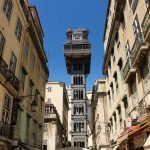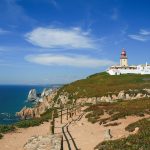Lisbon, Portugal’s capital, is an amazing place to visit not only because it offers a great variety of cultural and historical experiences, but because it also serves as an excellent base for exploring the surrounding regions.
Thanks to its strategic location, Lisbon provides easy access to a variety of stunning day trip destinations, from historic palaces, beaches and natural parks, all conveniently reachable by car, bus, or train.
Some of the most popular day trips from Lisbon include visits to Sintra, Cascais, Évora and Coimbra, but there are many other options that are just as amazing. To help you narrow down your search, today I’ll tell you all about some of my favorite day trip destinations from Lisbon.
I hope you enjoy them as much as I did!
Index
1. Sintra
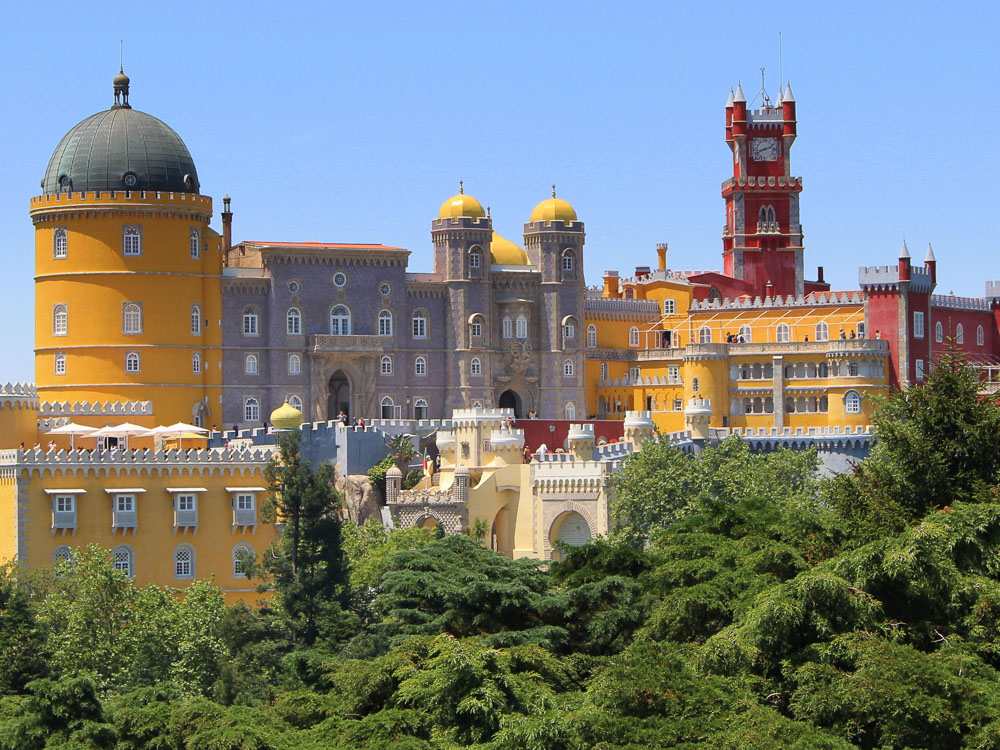
Nestled in the mountains just outside Lisbon, Sintra is a picturesque town celebrated for its UNESCO World Heritage sites and stunning palaces.
This destination is one of the top choices for a day trip from Lisbon, offering a unique blend of natural beauty and historical background.
Sintra’s key attractions include the Moorish Castle, with its sweeping views over the town; the colorful and eclectic Palácio Nacional da Pena; Quinta da Regaleira, known for its Gothic architecture and enchanting gardens; and Palácio Nacional de Sintra, located in the heart of the old town.
Besides these landmarks, a visit to Sintra isn’t complete without sampling the local pastries, such as the almond-filled travesseiros and the cheese tarts known as queijadas de Sintra.
How to get to Sintra?
Sintra is located about 30 km (19 miles) west of Lisbon. The drive via the IC19 road takes around 30 to 40 minutes.
Trains to Sintra depart frequently from Lisbon’s Rossio station, and the ride takes about 40 minutes, making it one of the easiest and most popular day trips from Lisbon.
2. Azenhas do Mar
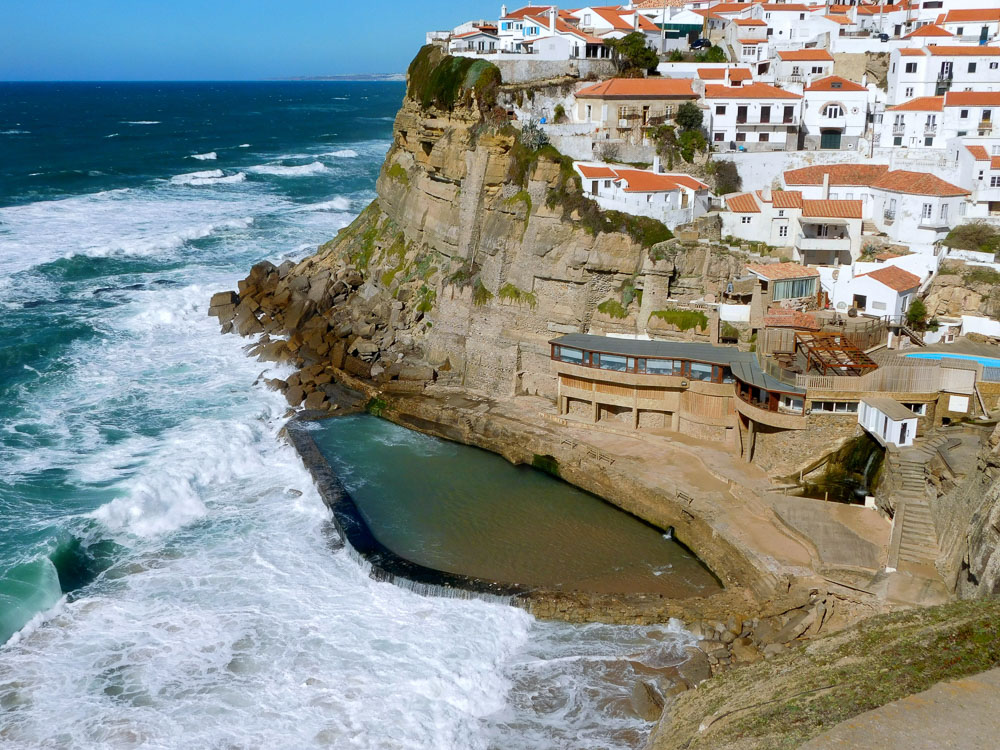
Azenhas do Mar, located within the Sintra-Cascais Natural Park, is a quaint coastal village about 40 kilometers northwest of Lisbon.
Known for its stunning cliffside setting, where whitewashed houses cascade down towards the Atlantic Ocean, this village is a perfect day trip for those seeking a peaceful seaside retreat.
Nearby Praia Grande offers a beautiful sandy beach and a large natural seawater swimming pool, popular among locals and tourists alike. This beach is also a prime spot for surfing, catering to both beginners and seasoned surfers.
How to get to Azenhas do Mar?
Azenhas do Mar is about 40 km (25 miles) northwest of Lisbon. The drive takes about 40 to 50 minutes via the A16 and N247 roads.
To reach Azenhas do Mar by public transportation, you can take a bus from Sintra, which take around 20 to 30 minutes. You can reach Sintra from Lisbon by train (40 minutes from Rossio station) and then transfer to a bus.
3. Cascais
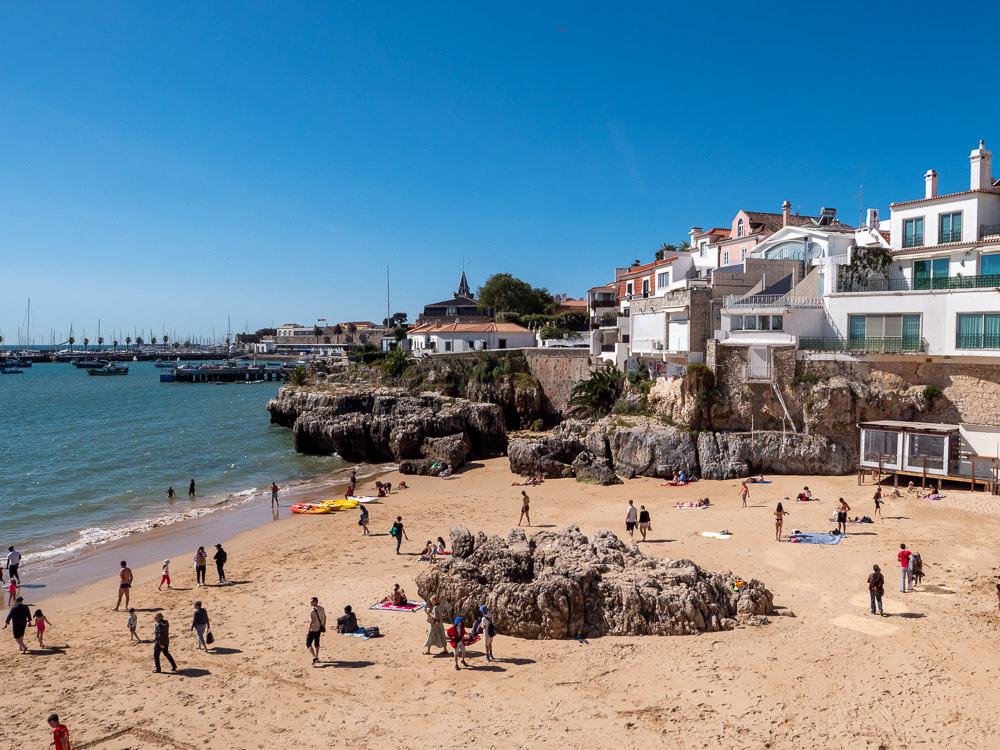
Just 30 kilometers west of Lisbon, the charming town of Cascais is a favorite escape for those looking to explore beyond the capital.
Cascais has a marina, a historic Old Town filled with cobblestone streets, cafes, boutiques, and art galleries, and the dramatic Boca do Inferno, where waves crash against rugged cliffs, creating a spectacular natural display.
Dining in Cascais is a treat, especially for seafood lovers, with fresh, local dishes at waterfront restaurants with stunning views of the Atlantic.
Whether you’re looking to relax on the beach, explore the town’s pedestrianized streets, or enjoy its lively nightlife, Cascais offers a delightful mix of traditional and modern Portuguese culture.
How to get to Cascais?
Cascais is located about 30 km (19 miles) west of Lisbon. The drive via the A5 motorway takes about 30 to 40 minutes.
However, the most convenient way to reach Cascais is by taking the train from Lisbon’s Cais do Sodré station. The train ride along the coast takes approximately 40 minutes.
4. Óbidos

Óbidos, a historic walled town about an hour and 15 minutes northwest of Lisbon, offers a glimpse into Portugal’s past with its cobblestone streets and charming whitewashed houses adorned with flowers.
As you enter Óbidos through its fortified gates, you’ll feel as though you’ve stepped back in time. Strolling along Rua Direita, the town’s main street, you’ll find shops selling local products like chocolate and ginjinha, a cherry liqueur served in edible chocolate cups.
The town’s medieval walls provide stunning views over the surrounding countryside, and the towering Castelo de Óbidos, originally a fortress built in the 8th century, now serves as a testament to the town’s rich history.
How to get to Óbidos?
Óbidos is approximately 85 km (53 miles) north of Lisbon. The drive via the A8 motorway takes about 1 hour.
Alternatively, buses to Óbidos depart from Lisbon’s Campo Grande bus station. The journey typically takes around 1 hour and 15 minutes. Rodoviária do Oeste is the main bus company serving this route.
5. Évora
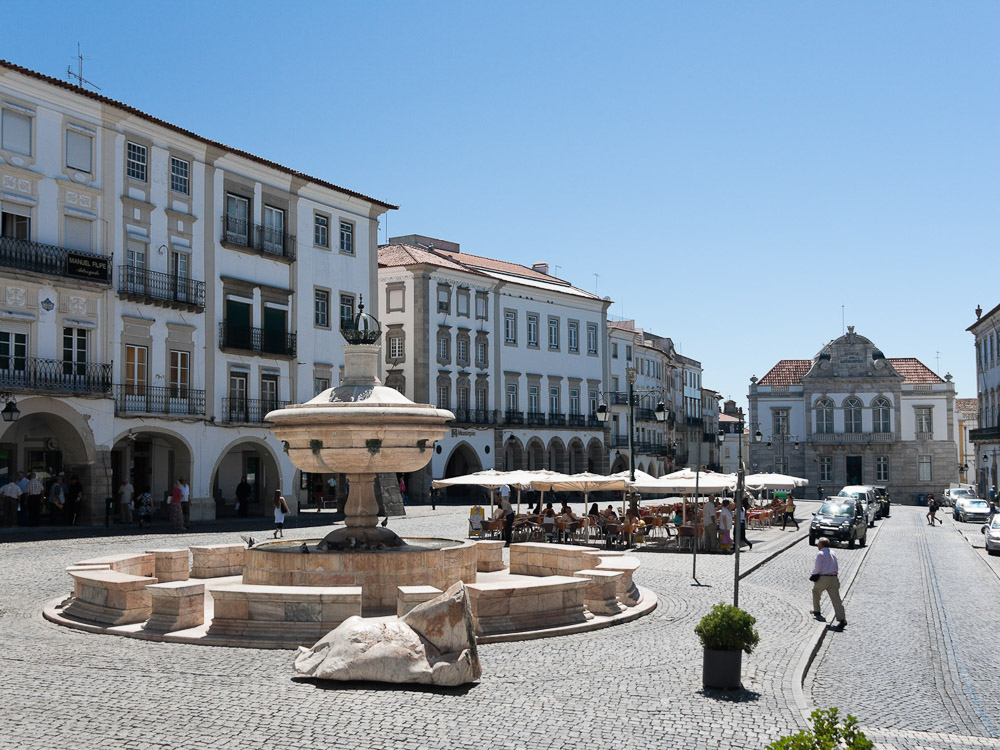
Évora, a UNESCO World Heritage site, is a city steeped in history located about 1.5 hours south of Lisbon.
The city is renowned for its well-preserved Roman Temple and the haunting Bone Chapel at São Francisco Church, where the bones and skulls of over 5,000 monks are displayed.
The heart of Évora is Praça do Giraldo, a lively square surrounded by cafes and a central fountain, where you can relax and soak in the local atmosphere. The square is a hub of activity, hosting various cultural events throughout the year, making it an essential stop on your visit to this historic city.
How to get to Évora?
Évora is about 135 km (84 miles) southeast of Lisbon. The drive takes around 1 hour and 30 minutes via the A2 and A6 motorways.
Alternatively, buses to Évora depart from Lisbon’s Sete Rios or Oriente bus stations. The journey takes approximately 1 hour and 45 minutes to 2 hours. Rede Expressos is one of the main bus companies operating this route.
Another option is to take a train to Évora departing from Lisbon’s Entrecampos station. The train ride takes about 1 hour and 30 minutes.
6. Peniche
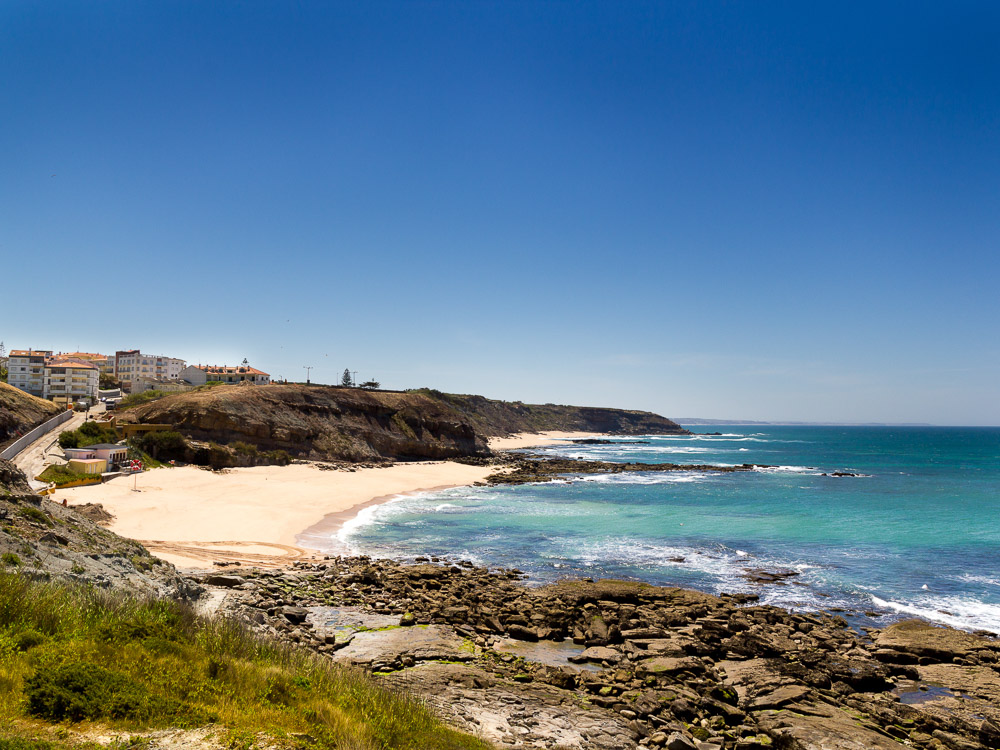
Peniche, located about 1.5 hours north of Lisbon, is a coastal town known for its beaches and surfing spots. Whether you’re looking to sunbathe on the sandy shores of Baleal or catch some waves at Supertubos, Peniche offers a perfect day trip for beach lovers and surf enthusiasts alike.
For those interested in exploring beyond the mainland, a ferry to Berlenga Grande island is highly recommended. The island is home to a nature reserve, clear waters, and a historic fortress that now serves as a museum.
Peniche is also renowned for its seafood, with local restaurants serving up fresh dishes like caldeirada (fish stew) and grilled sardines, making your visit both a culinary and cultural experience.
How to get to Peniche?
The quickest way to reach Peniche from Lisbon is by car. It’s about 100 km (62 miles) north of Lisbon and takes approximately 1 hour and 20 minutes via the A8 motorway.
Another option is to take a bus to Peniche departing from Lisbon’s Sete Rios bus station. The journey typically takes around 1 hour and 45 minutes to 2 hours. Rodoviária do Oeste is the main bus company operating this route.
7. Setúbal
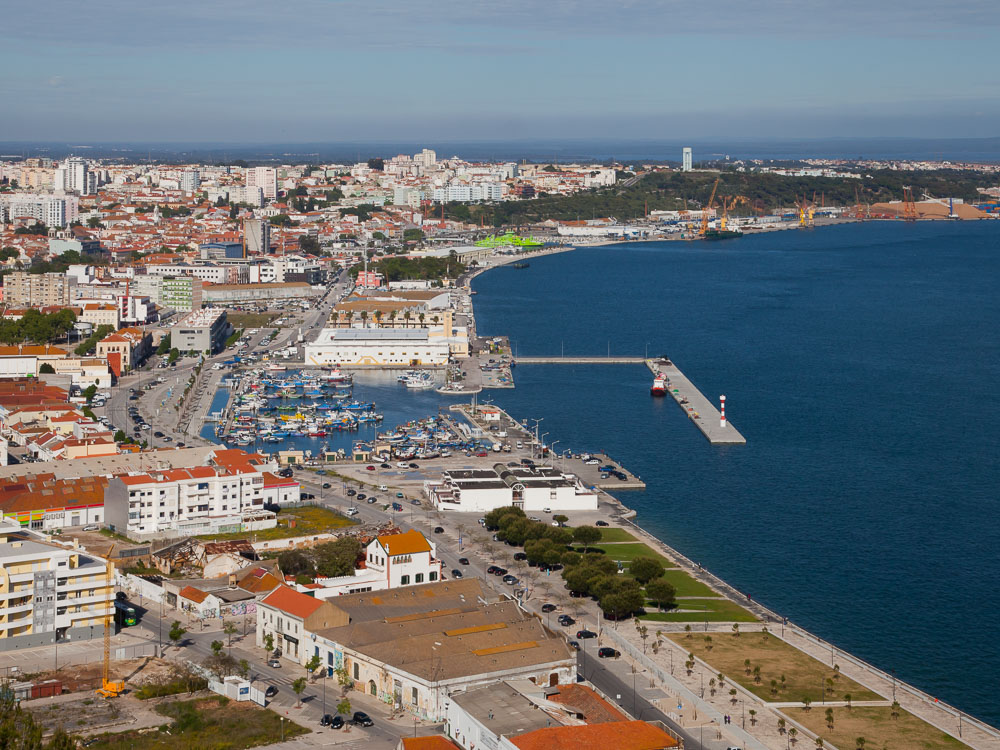
Setúbal, about 50 kilometers south of Lisbon, offers a delightful mix of natural beauty and cultural attractions, making it a perfect day trip destination.
The city is known for its bustling port, delectable seafood, and the Mercado do Livramento, a market famous for its fresh produce and local delicacies. Nature lovers can embark on a dolphin-watching tour in the Sado Estuary, where you can observe bottlenose dolphins in their natural habitat.
Setúbal’s combination of culinary delights and outdoor activities ensures a well-rounded and enjoyable visit, all just a short train or bus ride from Lisbon.
How to get to Setúbal?
Setúbal is located about 50 km (31 miles) south of Lisbon, and the drive via the A2 motorway takes around 45 minutes to 1 hour.
You can take a direct train from Lisbon’s Roma-Areeiro, Entrecampos, Sete Rios, or Campolide stations. The journey takes about 1 hour.
Another option is to take a bus, which is operated by Carris Metropolitana or Rede Expressos and run frequently from Lisbon to Setúbal, taking about 1 hour.
8. Mafra and Ericeira
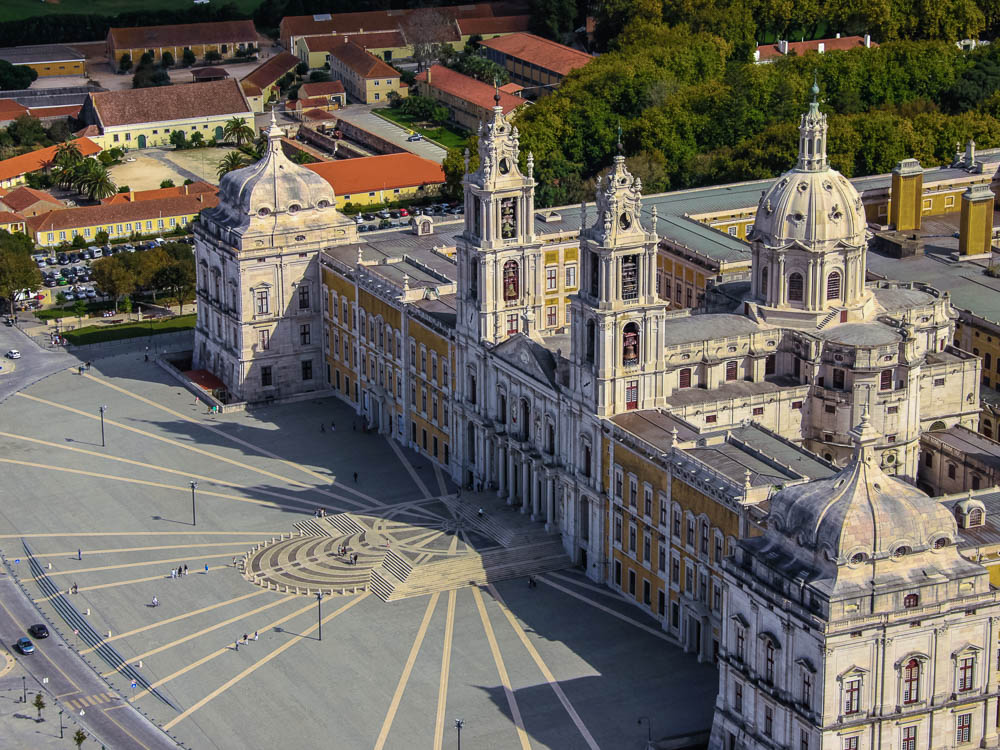
Mafra, located 30 kilometers northwest of Lisbon, is home to the grand Palácio de Mafra, one of Europe’s largest palaces with over 1,200 rooms. The palace complex includes a monastery, basilica, and a remarkable library protected by bats that keep insects at bay.
Nearby, the coastal town of Ericeira is known for its beautiful beaches and excellent surfing conditions. Ericeira’s charm lies in its blend of natural beauty and vibrant local culture, making it a popular destination for both beachgoers and surfers.
Activities such as stand-up paddling, cliffside hiking, and beach yoga make Ericeira an attractive spot for those seeking both relaxation and adventure.
How to get to Mafra and Ericeira?
Driving is the most convenient way to visit both Mafra and Ericeira. Mafra is about 40 km (25 miles) from Lisbon, and the drive takes around 35 to 45 minutes via the A8 motorway. From Mafra, Ericeira is an additional 15 km (9 miles) away, which takes about 15 to 20 minutes by car.
Buses to Mafra depart from Campo Grande station in Lisbon, operated by Mafrense. The trip takes about 45 minutes. From Mafra, you can catch another bus to Ericeira, which takes around 30 minutes.
9. Cacilhas
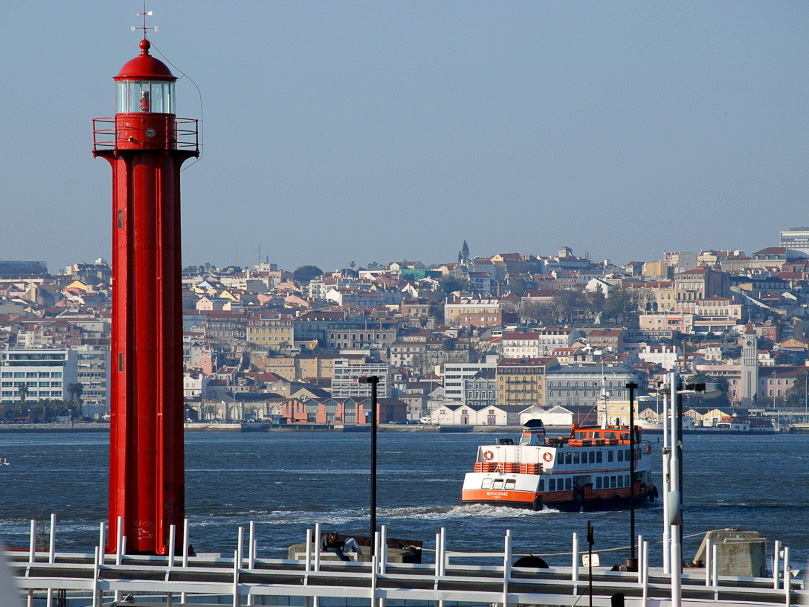
Just a short ferry ride across the Tagus River from Lisbon, Cacilhas offers a convenient escape with a rich cultural and maritime heritage.
This riverside borough is known for its fresh seafood restaurants, offering stunning views of the river and Lisbon’s skyline. The area’s narrow streets are perfect for leisurely strolls, and the Casa da Cerca contemporary art museum provides cultural enrichment with exhibitions and workshops set against a backdrop of beautiful gardens.
In the evenings, Rua Cândido dos Reis comes alive with bars, shops, and cafes, making Cacilhas an ideal destination for a quick yet fulfilling day trip from Lisbon.
How to get to Cacilhas?
The easiest and most scenic way to reach Cacilhas from Lisbon is by ferry. Ferries depart regularly from Cais do Sodré station in central Lisbon, and the ride across the Tagus River takes about 10 minutes.
If you prefer driving, you can reach Cacilhas by crossing the 25 de Abril Bridge. The drive takes about 15 to 20 minutes, depending on traffic.
10. Nazaré

Nazaré, located 121 kilometers north of Lisbon, is famous for its massive waves, which attract surfers from around the world, particularly to Praia do Norte.
This coastal town offers more than just surf; its lower town is filled with charming restaurants and shops, while the upper town provides stunning views from its cliffs.
The Forte de São Miguel Arcanjo, perched above the beach, offers insights into Nazaré’s maritime history and breathtaking views of the Atlantic.
Visiting between October and February is ideal for witnessing the towering waves, making it a memorable trip for nature enthusiasts and photographers.
How to get to Nazaré?
Nazaré is approximately 122 km (76 miles) north of Lisbon. The drive takes about 1 hour and 30 minutes via the A8 motorway.
Buses to Nazaré depart from Lisbon’s Sete Rios bus station. The journey typically takes around 1 hour and 45 minutes to 2 hours, depending on traffic and stops.
Which of these do you most want to visit?
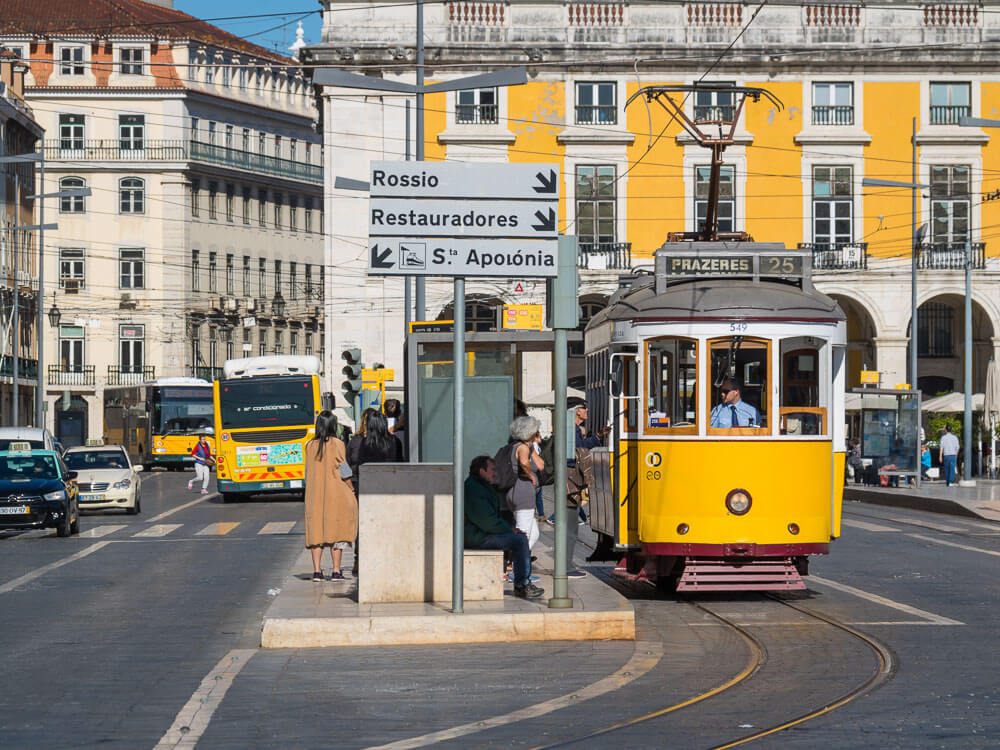
These day trips from Lisbon aren’t just about seeing new places, they’re about getting to know Portugal better. Each journey takes you into a different part of the country’s story, helping you connect with its past and present.
What’s so great is how easy it is to reach these places! In just an hour or two from Lisbon, you can find yourself in a new setting, whether it’s a quiet medieval town, a lively seaside village, or a historic city.
So, don’t miss out on the opportunity to go on a day trip from Lisbon! They will help you understand what makes Portugal so special, and gain new experiences that you’ll remember long after your visit.



